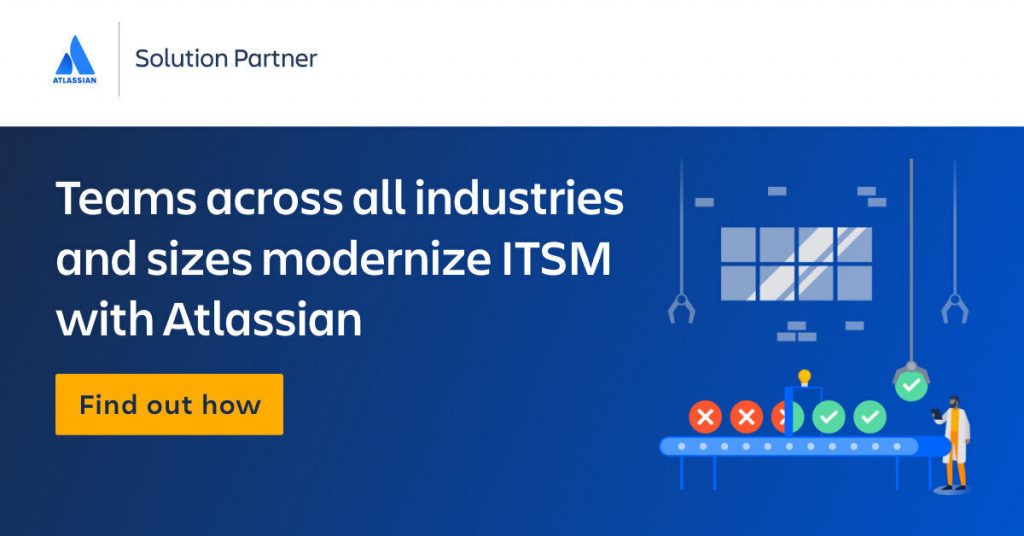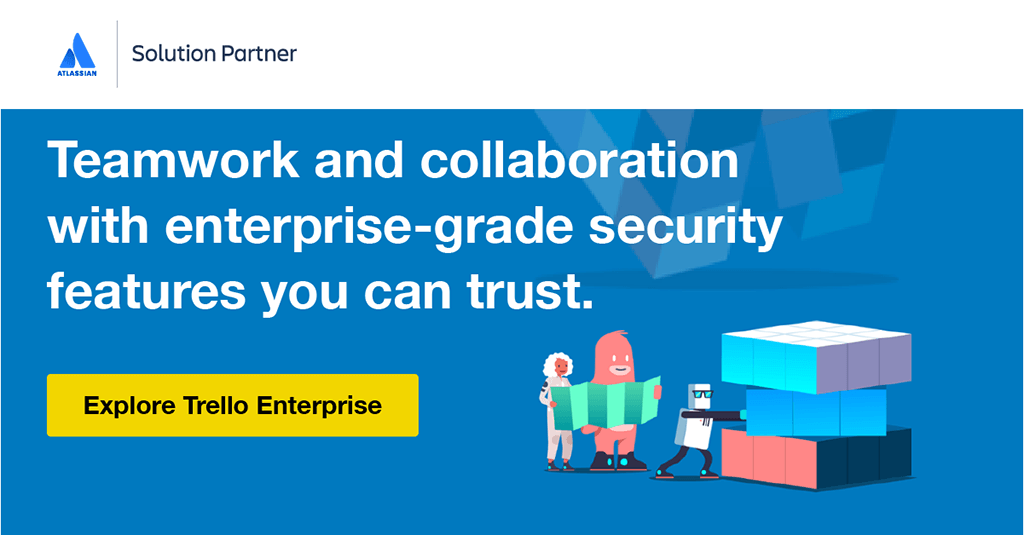
Efficiently fulfilling the goals of a project needs an “all-hands-on-deck” mindset. Cross-team collaboration eliminates information silos and unites disparate departments.
What were once separate and detached teams become a single driving force behind your organization’s objectives. That’s the only way to move forward fast in today’s dynamic and ever-shifting markets.
Moreover, cross-functional teams also tackle another big subject directly: workloads. The more complex and challenging a project is, the likelier for the involved teams to get burned out.
A burnout culture drastically reduces productivity, morale, and efficiency. However, when teams truly understand how to work together, they begin leveraging each other’s strengths and counterbalancing their weaknesses.
Cross-team collaboration creates accountability, focus, and decentralized governance. Where there was once just dysfunctionality, you can create simple task allocation and transparency.
For example, it’s not a good idea to have your web design team work in a void. What they create will actually have to be implemented down the line. The only professionals who can say if that’s achievable will be your developers.
However, in order to make sure that the design is SEO and CRO-friendly, the marketing team must be involved too. In the end, it’s all connected. Valuable back-and-forth that turns the final product or service into the best version of what it could’ve been.
The best way to enable teams to achieve cross-functionality (at a company level) is with Atlassian tools. Better ITSM, DevOps, issue tracking, incident management, collaboration, communication, information sharing, and much more.
Whenever you’re ready to bring your business to the next level, our specialists are here to help. Purchase (with a discount!), implementation, data migration, training, consulting; whatever you need, drop us a message.
Table of Contents
- What is Cross-Team Collaboration?
- Why Should You Want Cross-Functional Teams?
- Cross-Team Collaboration Challenges
- Cross-Team Collaboration Benefits
- How to Improve Cross-Team Collaboration (6 Strategies)
- Enable Cross-Functional Teams With Atlassian
What is Cross-Team Collaboration?

Any business worth its salt will aim to keep its stakeholders happy. Both its corporate ones, as well as those who are financially involved in one or multiple of its projects. So, teams are pushed to have better ideas, get better outcomes, achieve goals faster & better.
Unsurprisingly, that’s not an easy feat. Not traditionally in any case. Projects have multiple “gears” that must be rolling all at once and and in unison. It’s a delicate balancing act.
The project manager is the one who’s keeping it all together, sure, but it matters what they’re keeping together. Siloed teams who give no importance to what others are working on? Or, an interconnected ecosystem of colleagues that understand how they’re affecting each other?
Cross-team collaboration is the conscious effort of linking different tasks between each other. Creating transparency, logic, and continuity for a project’s lifespan.
For example, one of the most popular workflows for multidisciplinary teams is Agile. Having its origins in software development, it proposes work “sprints” with short-term goals.
This way, you can constantly keep delivering new bits and pieces to your project. This will both please stakeholders, and always give other teams something to work on. You’re eliminating down time.
Cross-functional teams recognize their diverse set of skills and focus on how to best take advantage of them:
- Staff get united behind a common goal. They adopt a cultural mindset that emphasizes collaboration and teamwork.
- Productivity is enhanced. When facing a wall, teams start relying on each other’s expertise to find simple solutions.
- Open communication is actively supported and encouraged. Information gets shared, team members have access to the data they need, there’s less confusion and uncertainty.
Why Should You Want Cross-Functional Teams?

Working with others can be difficult at times; and, it’s always going to be difficult at times. People are different, and teamwork doesn’t just happen by default. That’s why in a conventional setting, staff will generally try to isolate themselves within their department.
That’s where the more familiar people are for them. That relationship of collegiality grows and gives way to bonds of trust to form.
It’s way easier to work with someone who you can place your trust in. However, other teams are essentially just strangers. A marketing specialist might ask a developer to add a Google Analytics tracking snippet to a website, but without context or details.
A developer might finish a task and send it to QA assuming they somehow know what it’s about. An operations expert might be shocked down the road to see that the design team has exceeded their deadline by a large margin.
And those are only a few examples. The simple truth is that in a standard organization, staff will start playing the blame game with their peers sooner or later.
The Key Differences of Cross-Functional Teams
In a cross-team collaboration environment, there’s less segregation between specializations. Instead, you start speaking of a collection of different groups, all working together. Sales, marketers, designers, developers, you name them.
They meet in the middle to create common goals. They share strategies and explain their methods so that everyone understands how their work will tie in.
Example:
- Without cross-teams → The SEO specialist declares a website’s mobile speed score bad in a report to their manager. They leave it at that.
- With cross-teams → The SEO specialist meets with the development team to explain that speed scores are a very important factor for organic ranking. They mention that Google uses mobile-first indexing, and that certain practices can really hurt SEO.
Cross-functional teams decentralize hierarchies. Colleagues start talking to each other without being directed to do so. They’re more involved without being told to be so.
You’ll begin being more successful once you bring together the skills and talents of multiple employees. Making them feel united under the same banner is just so important.
When people feel that sensation of “belonging” to their group, they’ll be more eager to assume responsibilities and accountability. Cross-team collaboration bridges the departmentalization gap, while also providing inherent autonomy in cooperation.
Less “hawk-eyed” oversight from managers, more self-driven initiative from employees. They will respect their peer’s work because they will get that respect back.
Cross-functional teams need some pushing along at first, but then they work like magic mostly by themselves.
Cross-Team Collaboration Challenges

Innovation has many benefits, but there are also difficulties along the road. Cross-functional teams are the way to go, but you can’t just hope against hope that everything will run smoothly.
Fact of the matter is that a staggering amount of teams could only be pretending to actually work together. Back in 2015, Harvard found that 75% of cross-teams are dysfunctional. However, hold your horses and don’t be discouraged just yet.
The teams that Harvard analyzed failed at 5 very important things:
- Sticking to the planned budget.
- Respecting deadlines and the project schedule.
- Adhering to client or customer specifications.
- Delivering according to expectations.
- Aligning team goals with corporate goals.
If staff aren’t getting those 5 core principles right, then they are really using cross-team collaboration. They’re just trying to make it all work…somehow.
So, here’s a tip for you. One of the easiest ways to make sure your teams are going to work together and reach their targets is with specialized project management software. Atlassian is one of the biggest tech giants in the world who provides just what you need.
- Jira – for customizable issue tracking, task allocation and work transparency.
- Trello – simple kanban boards for non-technical teams that just need better coordination.
- Confluence – a universal knowledge base that centralizes information for all staff.
- Bitbucket – a go-to code hosting option when using a distributed version control system.
- Opsgenie – automated alert & notifications system for fast and reliable ITSM.
While some software options are strictly development-oriented, a lot of them solve the needs of business teams too. We’re ready to implement Atlassian cross-team collaboration tools in your business.
General Examples
While all organizations are going to face their own particular challenges, a lot of them are pretty common. Businesses have been using cross-functional teams for years now, so you don’t have to reinvent the wheel.
Learn from others’ experience and apply the solutions to your specific case.
For example:
Different time zones

Remote work is one of the new standards in web design, marketing, development, HR, finance, sales and other fields. While this digitalization simplifies work greatly, it also has implicit drawbacks.
Cross-teams grow to depend on each other. That’s ok if colleagues are split by a 2 hour difference, but less so if it’s a 6 hour difference. At least, that’s usually the case.
However, it’s all down to your project management skills. You can schedule meetings around everyone’s timetable, or rotate them around so the favorability evens up.
Use a collaborative tool such as Jira Work Management or Jira Software to keep conversations focused on specific tasks. Instead of dragging on email chains or Slack group chats, the Jira issue card is going to have all necessary details right there.
Since Jira supports @tagging, it’s simple to keep relevant people in the loop. No need to have calls about everything.
Different goals
This is one of the tough ones. Normally, it’s up to team leaders to assure that their people align with company values and objectives. Still, that doesn’t always pan out as expected. Sometimes, departmental goals will take precedence over your 5 year plan.
That can hurt your KPIs and stakeholder reporting metrics, but it doesn’t mean it’s a severe thing. It all depends on the context. Usually, goal diversions are short-term and for specific reasons.
That’s another very important reason why cross-teams should openly talk with each other. They should lay out priorities, requirements, and internal processes. In essence, find common ground.
Then, it’s likely that you’re going to see less disparity between your teams’ focus points.
Confluence helps a lot in that regard. It can streamline procedures, making it clear how workflows should look and how projects should proceed.
Different working styles
It can seem that someone’s slacking or falling behind; in reality though, the workflow just isn’t suiting them. They don’t have all the needed information or training to do their job right.
This becomes more problematic if entire other teams don’t seem to match up to their style either. In that case, it becomes the purpose of management to look at how to best integrate the new recruit into the picture.
Give them as many tools as possible to create a sense of cohesion. Show them company SOPs in Confluence. Do proper onboarding for Trello or Jira boards. Inform their team leader that they should provide more help and supervision for the moment.
It’s not easy to fit into a cross-team ecosystem if there’s no “muscle memory” involved. Sharing, asking, and reaching out solely on personal initiative must be taught and reinforced.
Cross-Team Collaboration Benefits

While they can be a bit difficult to get going, cross-functional teams drastically outperform their alternatives. Here are a few examples of how your organization would flourish:
Better Brainstorming
The bread and butter of generating great ideas is putting as many heads together as you can. The more people participating in the process, the higher the chance of getting quality ideas. However, step 1 is getting as many ideas as possible.
Then you can spend time filtering out the better ones.
What’s really great is that cross-teams are going to help both ends of the deal. In the idea generation part, you get more inputs. It’s actually very important not to filter out anything yet. Staff could actually self-eliminate a concept which would’ve actually turned out really well.
That’s the purpose of the second part: picking out the better choices. If you’re a sales expert, why not work together with a marketing specialist? Put both perspectives into play while deciding.
Improved Relations
Most of your employees most likely want to feel like they belong to their team; that they’re an integral part of it. Don’t believe us? Just ask them yourself!
Cross-team collaboration is going to empower that feeling of familiarity and friendliness. The more employees work together, the higher the chances they’ll form a bond of trust. As their relationship develops, so too will their ability to work together efficiently.
It’s important to remember that personal feelings are often put above professionalism. People that don’t really like each other arent’ going to collaborate too well.
Extended Options
Cross-teams no longer look at an issue from a single angle. Each member brings views and opinions which are backed by their expertise and knowledge.
By combining them with the perspectives of different colleagues, cross-teams can achieve surprisingly effective results.
Additionally, where one team could get stuck, another is there to provide an alternate solution.
Knowledge Growth

Thanks to the communication and cooperation happening in cross-functional teams, its members will actually passively develop. As staff get in contact with more and more information, they’ll unknowingly start to really understand it.
Before you realize it, you’ll have design teams that have SEO basics. Or development teams who know how a landing page will be used for PPC. Or anything in-between and more.
The process works great because people aren’t actually aware they’re picking up new things. They don’t see it as forced learning, so they retain that information easier.
Faster Time to Market
Since teams are always keeping in touch, there’s less back and forth. Less email overload or huge Slack message chains which only a few employees will even read anyway.
By taking advantage of video calls and “share screen” functions, key points and arguments get across much faster. Of course, those might not even be needed.
If your staff are already using Confluence and Jira, they can easily plan their roadmap and workflows. It becomes clear what the order of steps is, and who should be doing what and by when.
Space for Innovation
It’s problematic to think that you’re definitely working in the best way possible. You should always keep an open mind for a better approach; new tactics, new strategies, etc.
Cross-teams enable their members to speak their minds freely. We think you’ll be surprised at how much valuable input you can get when people are just motivated a bit to say what they’re thinking.
Of course, you’ll get some sub-optimal ideas too. Remember not to shut them down aggressively! That will inhibit innovative ideas in the future and demotivate brainstorming.
Staff Retention
Open communication, collaboration and transparent coordination create healthy workplaces. Top talent is likely to stick to such companies. So, in time, you’re going to form new and improved leadership teams from internal personnel.
Furthermore, recruiting is easier too. You’ll be able to differentiate yourself from competitors with key advantages brought by a cross-departmental work culture.
Simpler Sales Pitches

Leads look at your organization as a whole anyway. They don’t differentiate between development, marketing, design, etc. The only thing that matters is results, and if you can get them.
Since that’s the mindset of most people who you’ll work with, it’s great if your internal structure represents it too. You can reassure clients and stakeholders that all of your teams have the bigger picture in mind. That they’re working to achieve the same goal.
How to Improve Cross-Team Collaboration (6 Strategies)
All right, so now you know why you should strive towards having cross-functional teams in your company. Now, let’s talk about how you can achieve that.
Strategy 1: Assure Executive Buy-In
- Suggested tool: Confluence
Cross-functional teams are great at decentralized work, but you’ll still need a few key decision-makers. Their presence in weekly/monthly calls could just be what makes or breaks a project’s progress.
It’s very helpful to have executives directly included in conversations with team leaders. Think of the VP of sales, the CMO, the CTO, the COO, or even the CEO.
Their roles would be to:
- Identify and remove any obstacles in a team’s progress.
- Establish expectations and success metrics. For example, the top KPIs.
- Decide on the best market approach (together with team leaders).
- Assess the current readiness of teams for Agile projects.
You can use Confluence to define what executives are going to do for all involved team members. This way, no one’s confused about procedure (like who they should report to).
Strategy 2: Choose Team Leaders
- Suggested tool: Confluence or Jira
Cross-functional teams can sometimes leave a bit too much room for aspiring leaders. It’s great that staff want to take initiative, but you should make it clear who’s in charge.
When departments work together directly, there’s also a possibility that different team leaders will want to be the de facto authority. Settle the matter from the start; each team leader has the final say over their respective team.
However, then they will have to report to a superior, together with the other team leaders. For example, the project manager; who’s in a position to make top-level decisions.
You should have clear leadership guidelines. Clear & concise points about who’s responsible for what (specific duties).
Strategy 3: Allocate Tasks & Responsibilities

- Suggested tools: Jira Software, Jira Work Management, Jira Service Management, Trello
Almost everyone’s going to say that they value communication in the workplace. Through Jira, you can take it to the next level. Employees are easily going to understand their workloads, deadlines, as well as how tasks connect with their colleagues’ work.
This way, you’ll avoid bottlenecks. For example, your copywriter might’ve finished their work for the website’s service pages. However, the designer just didn’t know this. So, nothing’s being designed.
Consequently, nothing’s ever going to reach the developer. So, nothing’s getting implemented; that’s how a lot of time is being wasted without anyone even realizing it.
Not with Jira though! Jira creates a cohesive environment where tasks are clearly visible, and responsibilities are transparent. You can create kanban and scrum boards for each project, giving access permissions only to relevant staff.
On those boards, you create “issue” cards, which can be part of larger “Epics” (large bodies of work with many sub-components and steps).
A team member is assigned to that task at all times, and they can comment and tag each other directly on the issue card. They also get notified by email, so no messages or task assignments will ever be missed.
When the marketer is done, they can directly make the designer the task’s assignee. Then, the designer can switch to the developer. This is how team members will understand their roles better.
Since the bigger picture is defined and people know what they must do, the PM also has an easier time keeping track of progress. For example, time estimates can be put directly on that Jira card. There are columns such as “Backlog”, “In Progress”, “QA”, etc.
Basically, Jira simplifies the entire process.
Strategy 4: Create Clear Documentation
- Suggested tool: Confluence
There are very few worse things than uncertainty. Unsurprisingly, teams like knowing exactly what they have to do. Hearing things like “The client wants around 3 pages done by Thursday” is just excruciating.
Expectations, requirements and deadlines must be set in stone from a project’s beginning. Only then will cross-team collaboration reach its maximum efficiency.
Use Confluence to create “Pages” where all the details are laid out.
- What is needed – specific information + further information sources
- Who is doing it – task allocation to 1 or multiple team member(s)
- When is the deadline – specific dates for all major deliverables
- Who are the project leads – team managers + project manager
Strategy 5: Centralize Communication

- Suggested tools: Jira Software, Jira Work Management, Jira Service Management, Trello
Fragmenting discussions is a bad idea; plain and simple. There’s no reason to spread out communication across a multitude of tools.
If you don’t consolidate conversations in only a few places, information will be lost. Colleagues start talking in private messages or small groups. They ignore that others should know those details as well.
Very fast, you’re in a situation where requirements aren’t clear, staff are waiting for tasks, and the PM isn’t sure what went wrong.
To avoid all of that, just use the appropriate solution from Atlassian’s stack:
- Coordinating a development team? Keep all project-related conversations on Jira Software.
- Need to align business teams (marketing, design, HR, ops, finance, etc)? Jira Work Management is the go-to solution.
- Have your ITSM specialists been telling you that they want a better ticketing platform? Jira Service Management is the way to go.
- Are you an SMB who’s trying to create better coordination among a smaller number of multidisciplinary staff? Trello is the perfect option for non-technical teams.
Strategy 6: Create a Q&A Document
- Suggested tool: Confluence
Free up your managers and expedite resolutions by having a Q&A process distributed to your entire company. Within, give concrete answers to common situations that might occur during a work day.
For example:
- Q: “I’ve finished all the tasks I was given for this week ahead of time.”
- A: “Check with your colleagues and team leader to see if anything else needs doing. Otherwise, see you on Monday!”
Enable Cross-Functional Teams With Atlassian

Cross-team collaboration is only going to work as well as the tools you’re using. Atlassian’s mission is to empower better communication, cooperation and Agile workflows across industries.
As certified partners, we can help you acquire and implement any Atlassian solutions. Already using a project management system? Not a problem! We’ll simply migrate your data to the new tools.
Development, marketing, design, HR, ops, finance, etc; there’s software that will help them all do their jobs easier. All you have to do is get in touch with the contact form just down below.
